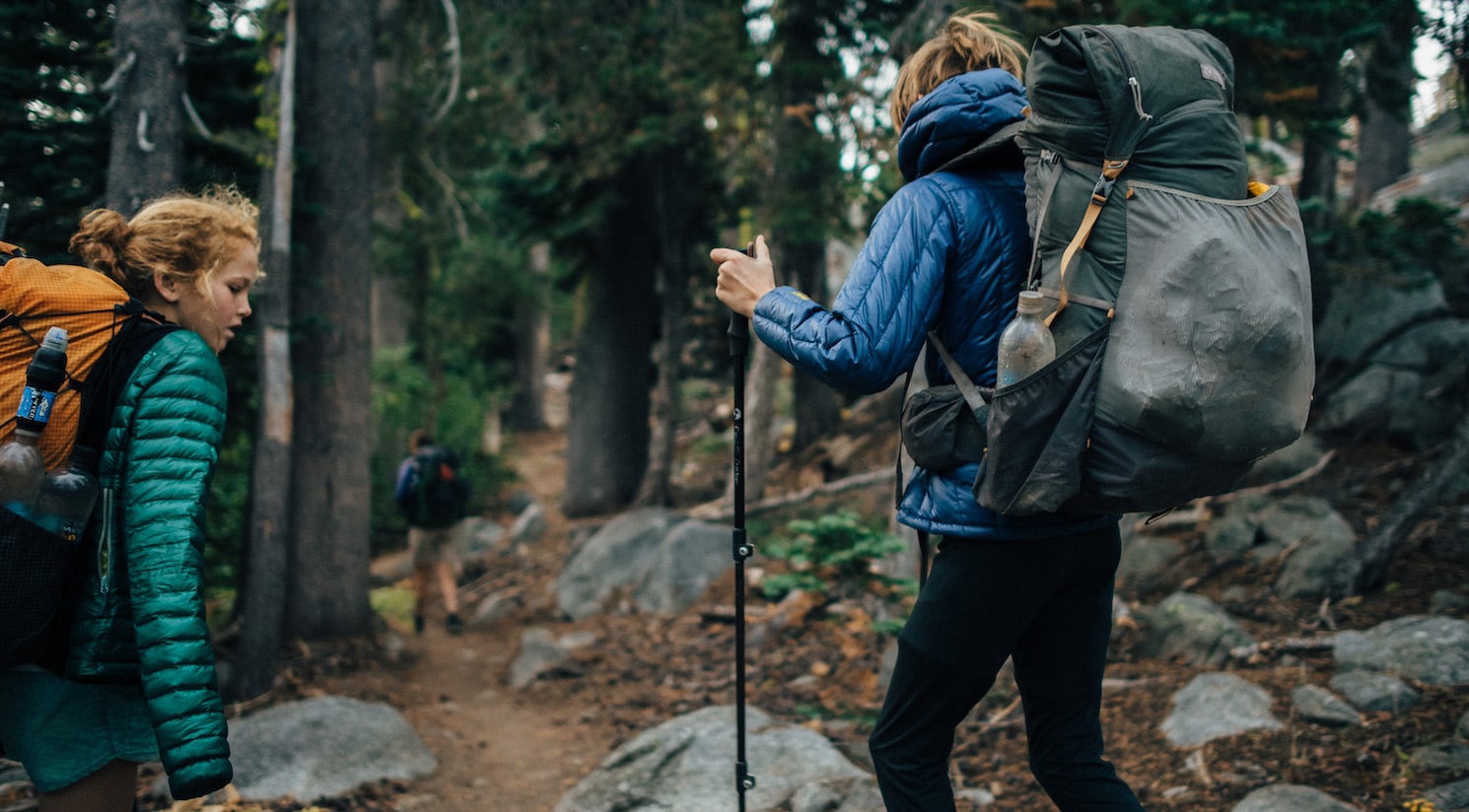Research shows the natural world is good for kids. It can lead to improved mental health when they’re older, boost happiness and build confidence and reduce stress and support creativity, according to research.
Some families get outside via a stroll through the woods or a few summer camping trips—which, to be sure, is excellent—but the families we spoke to here are more on the level of running a 20-miler together or hiking the entire Western corridor.
That may sound intimidating, but fret not. These parents emphasize that high mileage is not the be-all and end-all to reaping nature’s rewards, and that they started modestly, progressing one literal step at a time.
Likewise, the legitimate physical strain on kids as young as elementary schoolers may naturally raise an alarm. But these families have done their research and are more interested in the benefits they have seen firsthand, like increased self-awareness, heightened focus, managing fear and developing a caring attitude toward nature.
Read on for more about four families who embrace time on the trails—hiking, running, backcountry camping—and are thriving because of it.
The Strawbridges
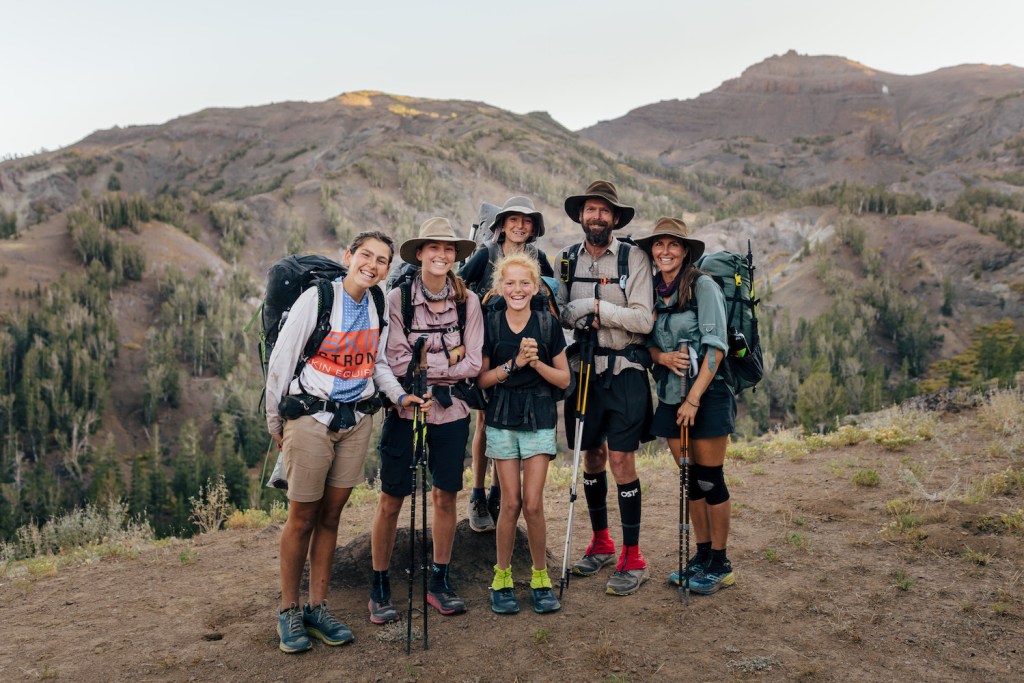
The Strawbridge family hiked the entire length of the Pacific Crest Trail together. (Photo Credit: Dustin Prickett)
Monica Strawbridge, a mother of four from Lakeland, Florida, wanted to thru-hike the 2,650-mile Pacific Crest Trail, but didn’t know when would be the best time to tackle it. Should she wait for her kids to get older? Maybe make it a trip for two with her husband, Vince, once the kids had flown the coop?
Then, in 2017, after a family trip to the Smoky Mountains that included some lengthy hikes, she thought, why not bring the whole gang? She also figured they should do it sooner rather than later.
They planned and prepared for the PCT for a year, then parted ways from civilization on July 4, 2018. They started at the Canadian border in Washington state and began walking toward Mexico. The kids, Aiden, June, Henry and Georgie, were 17, 14, 13 and 11, respectively, at the time of their hike.
Perhaps to no one’s great surprise, a few struggles came into play. Henry, the only boy, maintained that he was not enjoying himself the entire time, no matter the scenery or treats involved. Georgie, the youngest, would cry so regularly they started calling the event “cry-thirty,” and June had a tremendous, pole-throwing meltdown near Mather Pass—although to be fair it was 17 degrees and snowing at the time.
But they kept moving, one step and one day at a time, the struggles and the joy, all spent together. They averaged 20 miles per day and incorporated full rest days, enduring the spectrum of elements that define life on the PCT for 4 ½ months.
Family lessons were abundant. For example, Vince developed a better sense of when issues needed tending to, versus when to let them sit. “I learned we don’t have to get involved with every emotion,” he said. “Whether it was failure, success or frustration, there was plenty of time for it.”
A big takeaway for Monica was the humanizing element they shared. “The kids saw me eating candy and struggling really hard some days. I became more of a human to them, and less of a mom,” she said.
They finished in the fall—all humans still intact and smiling—and each family member used the trek as a platform to raise funds for charitable causes of their choosing.
When asked by other families for advice, Monica doesn’t wince at the hardships but instead offers clear advice: “If you can swing it, go for it,” she tells them. “It’s amazing.”
The Reddens
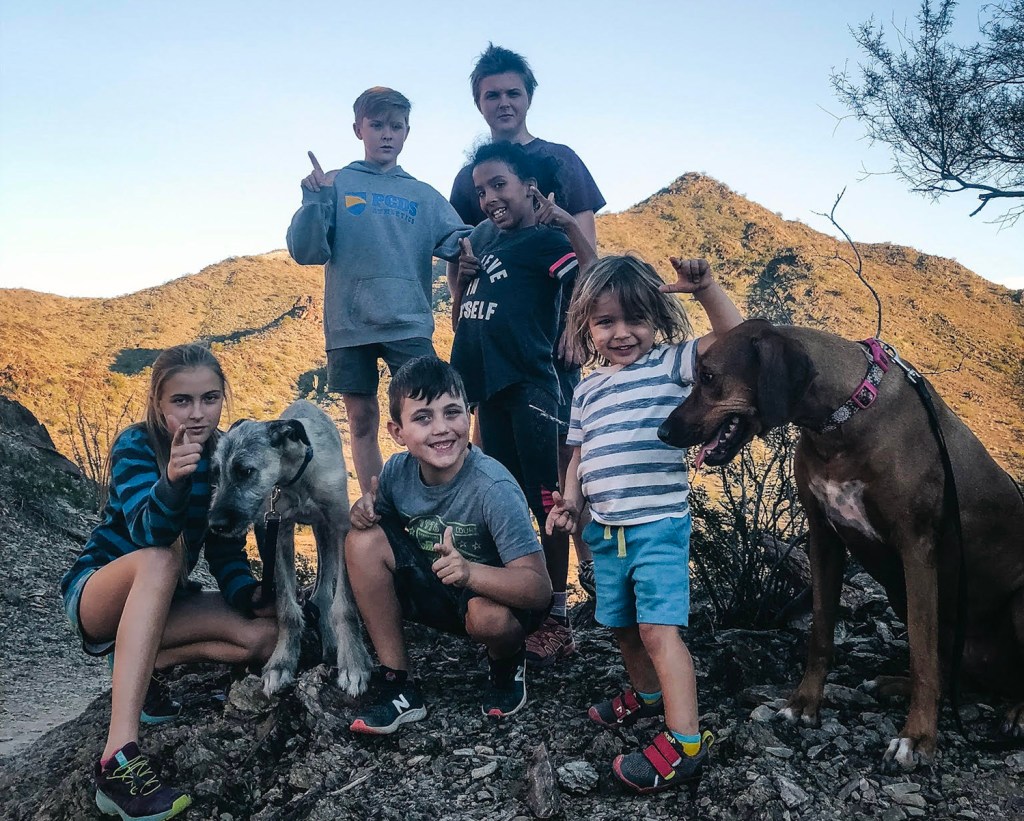
The Redden family includes six kid, ages 3 to 16. (Photo Courtesy: Sabrina Redden)
Sabrina Redden is a single mom to six “T” kids—Tahj, 16, Teagan, 14, Tayer, 12, Tennyson, 9, Tru, 9, and Taggart, 3. She partook in ultramarathons with some of her kids before they hit double digits. “Early on, I discovered that our family benefited far more from being outside than inside,” said Sabrina, who lives in Phoenix, Arizona.
Starting as toddlers, the little ones ran wild, hiked, biked, climbed and generally adventured nonstop. They also entered races. Tahj ran a 50K when he was 7, and Teagan ran the same race when she was 8. And so it went.
A fast finish or supreme fitness was never the goal. Sabrina enjoyed immersing herself in ultrarunning, and so the whole family would share in on the adventure, the landscapes and the camaraderie.
She spends half the year with her kids, and they spend the other half with Seth, the biological father of three of the kids and the adoptive father of two more, who lives in Phoenix as well. As an ultrarunner and outdoor athlete himself, he contributed in laying the groundwork for their unique upbringing.
The high mileage the kids were tackling drew criticism on online message boards from those concerned about the potential harm those distances could do to their young bodies, but their parents remained supportive. The family doctor was aware of their running and didn’t discourage it, and Seth studied biomechanics in college.
Now eight years since that first 50K, Sabrina has seen her share of scrapes and bumps, but reports no negative consequences from pounding the dirt. She does, however, notice an uptick of kids participating in ultraruns and a decrease in criticism these days, signaling a shift in public perception.
The most notable benefit she believes came from the adventuring? Confidence. “They are able to handle more,” Sabrina said. “We let them take the lead, and we’re there in case they need us.”
The kids have developed passions outside of running as well, which Sabrina supports wholeheartedly. But she sees the interests of her kids stemming from their deeply rooted connection to nature. For example, Tahj is spending this summer in Australia, working at an animal sanctuary. “They want to help protect the world, and that comes from running,” Sabrina said.
The O’Neills
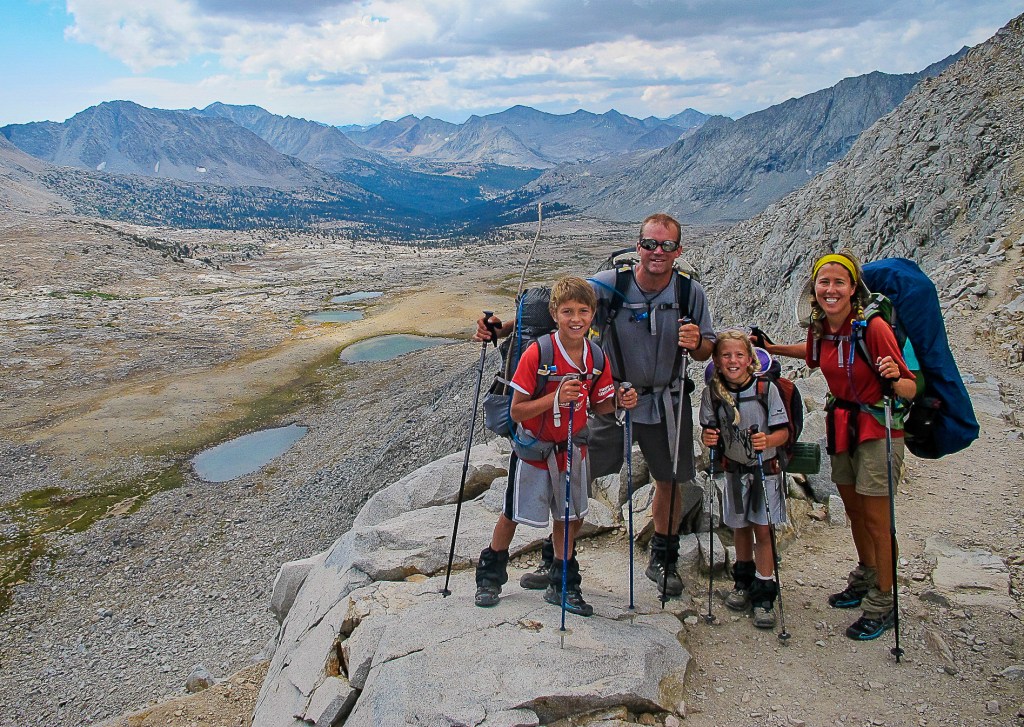
The O’Neills from Oregon have hiked thousands of miles together. (Photo Courtesy: Julie A. O’Neill)
Julie A. O’Neill has entered the ring of a tough fight. She wants to wean society—especially youth—off devices and into the great outdoors.
As a high school teacher in Redmond, Oregon, and a mother of two, she walks the walk (pun intended). She authored a book Living Without Walls, about her family’s outdoor experiences, and the benefits of unplugging in nature.
Her kids, Bekah and Cade, now 16 and 18, respectively, have hiked thousands of miles, including their first 100-plus-mile summer when they were 5 and 7. Since the kids were newborns, she says they’ve spent one or two weeks fully immersed in the outdoors every summer, mainly in the Sierra Nevada mountains.
“When you allow them to be outside, they are allowed to fill in the white noise with their own creative ideas,” Julie said. “Life outside is not planned for them or coming at them in [the form of] pixilated entertainment. It’s simpler and calmer and allows them time to let their minds wander freely with a more singular purpose.”
The outdoors, however, nearly took her life. In 1996, she suffered multiple seizures in Eastern Oregon, when she was with her husband, Cory, and a friend. She took a hard fall and sustained injuries. Luckily, they happened upon a few backcountry rangers who radioed in a helicopter, saving her life.
Getting back into the wilderness after that was difficult, but she felt too strongly about the importance of nature immersion to quit. “It’s about facing the fear and working with it. Fear makes things more real. It’s not about getting rid of it, it’s about managing it,” she said.
Twenty-three years later, she is as active as ever, and revels in watching her kids transition to adulthood with their outdoor experiences shaping them. Her son, Cade, for example, has excelled in soccer and is heading to college on athletic and academic scholarships, despite missing summer soccer camps because they were out hiking.
She believes the trail time actually helped his game. “My kids know how to be focused, and I believe this came from summers spent outdoors,” she said.
This year, she looks forward to more time spent on the John Muir Trail with her husband and kids.
The Braford-Lefebvres
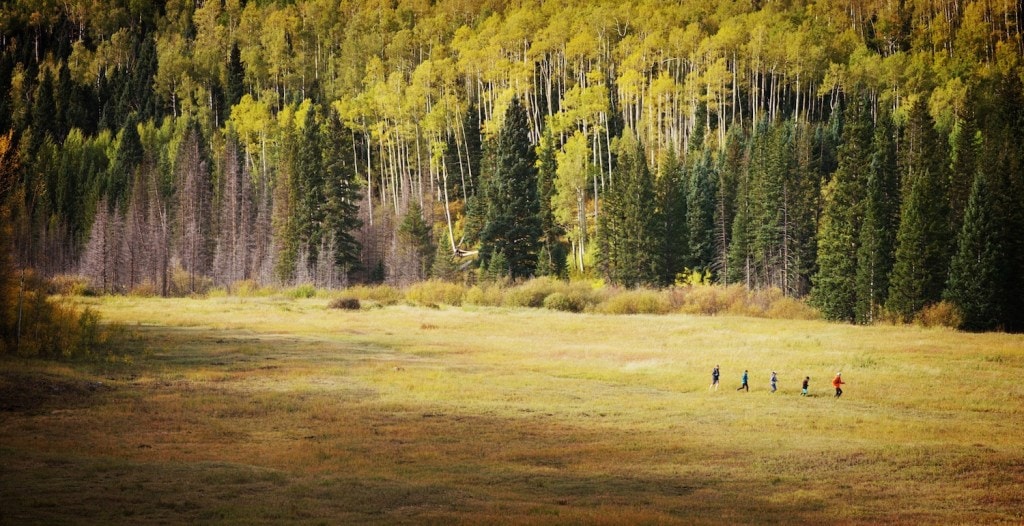
Cody Braford and Ivy Braford-Lefebvre train for ultramarathons with their kids in tow. (Photo Credit: Nick Waggoner/Sweetgrass Productions)
Cody Braford and Ivy Braford-Lefebvre needed a change. They were in their 30s and living in the tiny, beautiful mountain town of Silverton, Colorado (elevation: 9,318, population: 650). They had started raising a family, but were drinking too much, and navigating a rocky marriage.
In the midst of that tumult, a thought came to Ivy. She had run as a youth but hadn’t in years. She found a 2.2-mile loop in town and went for a jog. At first, she couldn’t complete it without stopping for rest, but she kept at it, finding solace in the grind. “I told myself if I could drink a 12-pack, I could run 2 miles,” Ivy said. “Running became a confidence builder where I could build myself up after breaking myself down.”
Fast forward almost 10 years and things have progressed well, to put it mildly.
Ivy and Cody both got sober, and Cody is a runner now, too. At first he did it to spend time with Ivy, and from there it took off. They are now regulars in the ultrarunning world, with a full calendar of 100-mile races (and more than a few podiums).
They have three kids (plus a dog, cat, several tarantulas and a pig): Blaze, 18, Raja, 15, and Soren, 13, who have carved a running pedigree of their own in the toothy and harsh landscape of Silverton. Blaze ran a 106-mile race at 13, and Raja and Soren ran 50Ks at ages 11 and 10, respectively.
Tempering all that raw energy required strategy. Ivy and the kids started with 5Ks and moved up from there, taking a slow approach. Cody, however, went more maniacal. “I traded one addiction for another. My first race was a 150-miler,” he said, while laughing.
But perhaps Cody needed to go that big to make his life transition possible. Both parents agree that the inherent discomfort in running was necessary to move to sobriety. “Running helps you deal with a tough situation in a tough manner,” Cody said.
With Blaze now in college, and the kids involved in backpacking, skiing and more, it can be tough to run with the full crew. Nevertheless, they make sure to squeeze in a weekly family jog—at least 10 miles long with lots of hills—to keep the tradition alive.
“We use running as a connecting point, to try to be together,” Ivy said. “I’m just glad they enjoy it, and hope they have it in their hearts for their whole lives.”
